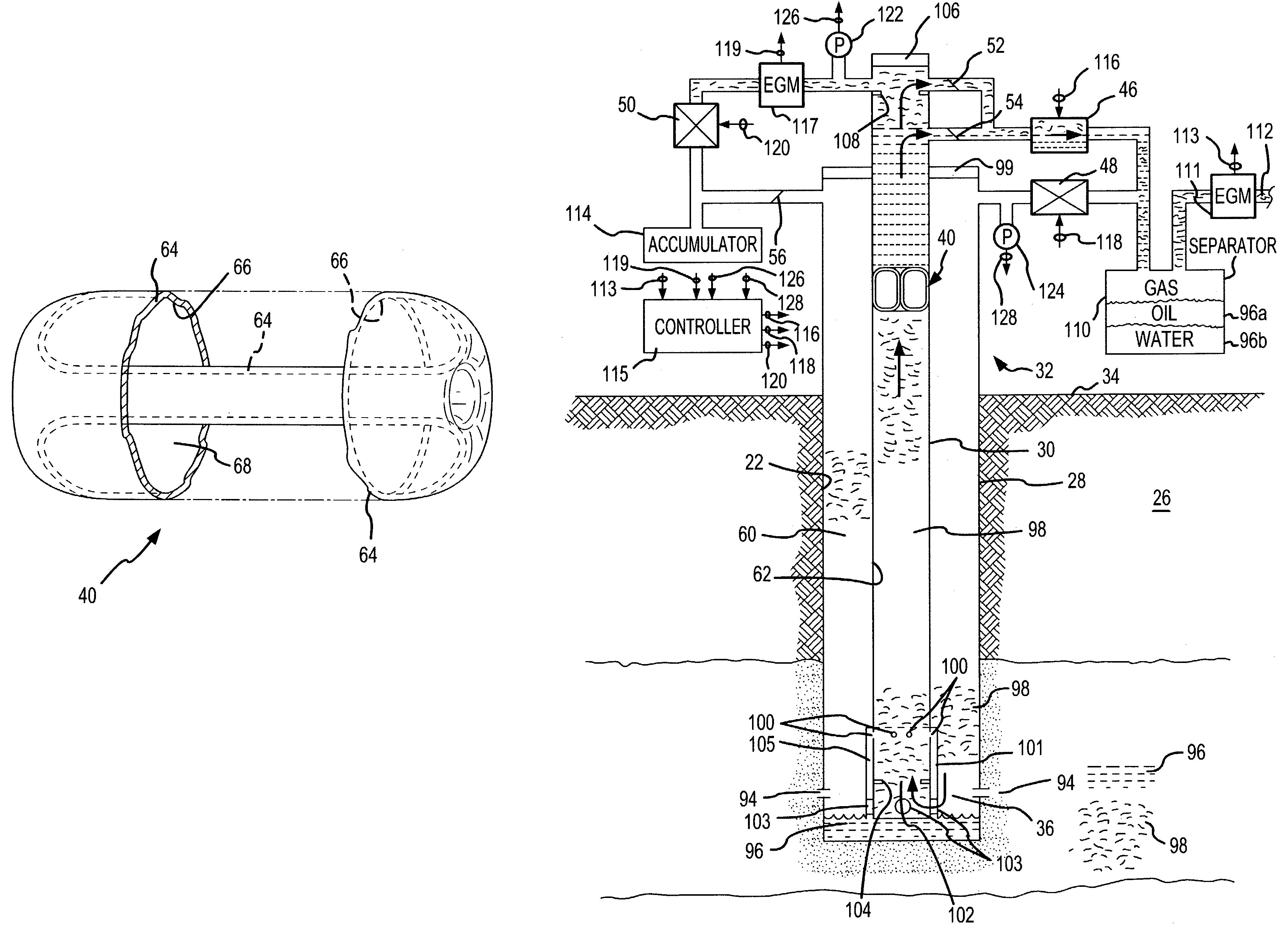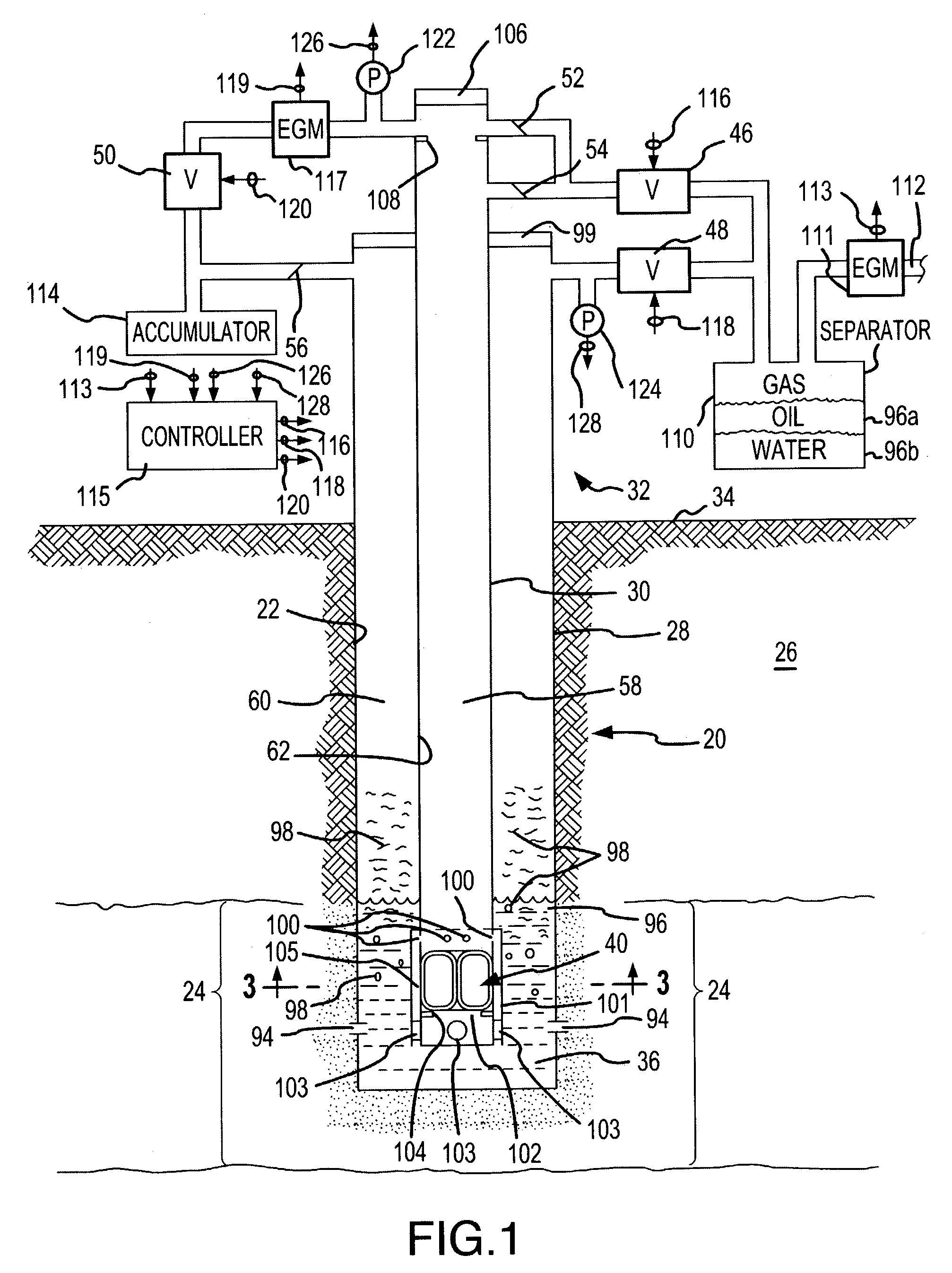Method and apparatus using traction seal fluid displacement device for pumping wells
a technology of fluid displacement and traction seal, which is applied in the direction of fluid removal, sealing/packing, and wellbore/well accessories, etc., can solve the problems of parts that wear and ultimately fail, present certain irregularities, and are susceptible to wear and failure, so as to reduce the energy cost of pumping, reduce the pumping efficiency, and eliminate or reduce wear.
- Summary
- Abstract
- Description
- Claims
- Application Information
AI Technical Summary
Benefits of technology
Problems solved by technology
Method used
Image
Examples
Embodiment Construction
[0023]An exemplary hydrocarbons-producing well 20 in which the present invention is used the shown in FIG. 1. The well 20 is formed by a well bore 22 which has been drilled or otherwise formed downward to a sufficient depth to penetrate into a subterranean hydrocarbons-bearing formation or zone 24 of the earth 26. A conventional casing 28 lines the well 20, and a production tubing 30 extends within the casing 28. The casing 28 and the production tubing 30 extend from a well head 32 at the earth surface 34 to near a bottom 36 of the well bore 22 located in the hydrocarbons-bearing zone 24.
[0024]An endless rolling traction seal fluid displacement device 40 is positioned within the production tubing 30 and moves between the well bottom 36 and the well head 32 as a result of gas pressure applied within the production tubing 30. Formation pressure at the hydrocarbons-bearing zone 24 normally supplies the gas pressure for moving the traction seal device 40 up and down the production tubin...
PUM
 Login to View More
Login to View More Abstract
Description
Claims
Application Information
 Login to View More
Login to View More - R&D
- Intellectual Property
- Life Sciences
- Materials
- Tech Scout
- Unparalleled Data Quality
- Higher Quality Content
- 60% Fewer Hallucinations
Browse by: Latest US Patents, China's latest patents, Technical Efficacy Thesaurus, Application Domain, Technology Topic, Popular Technical Reports.
© 2025 PatSnap. All rights reserved.Legal|Privacy policy|Modern Slavery Act Transparency Statement|Sitemap|About US| Contact US: help@patsnap.com



